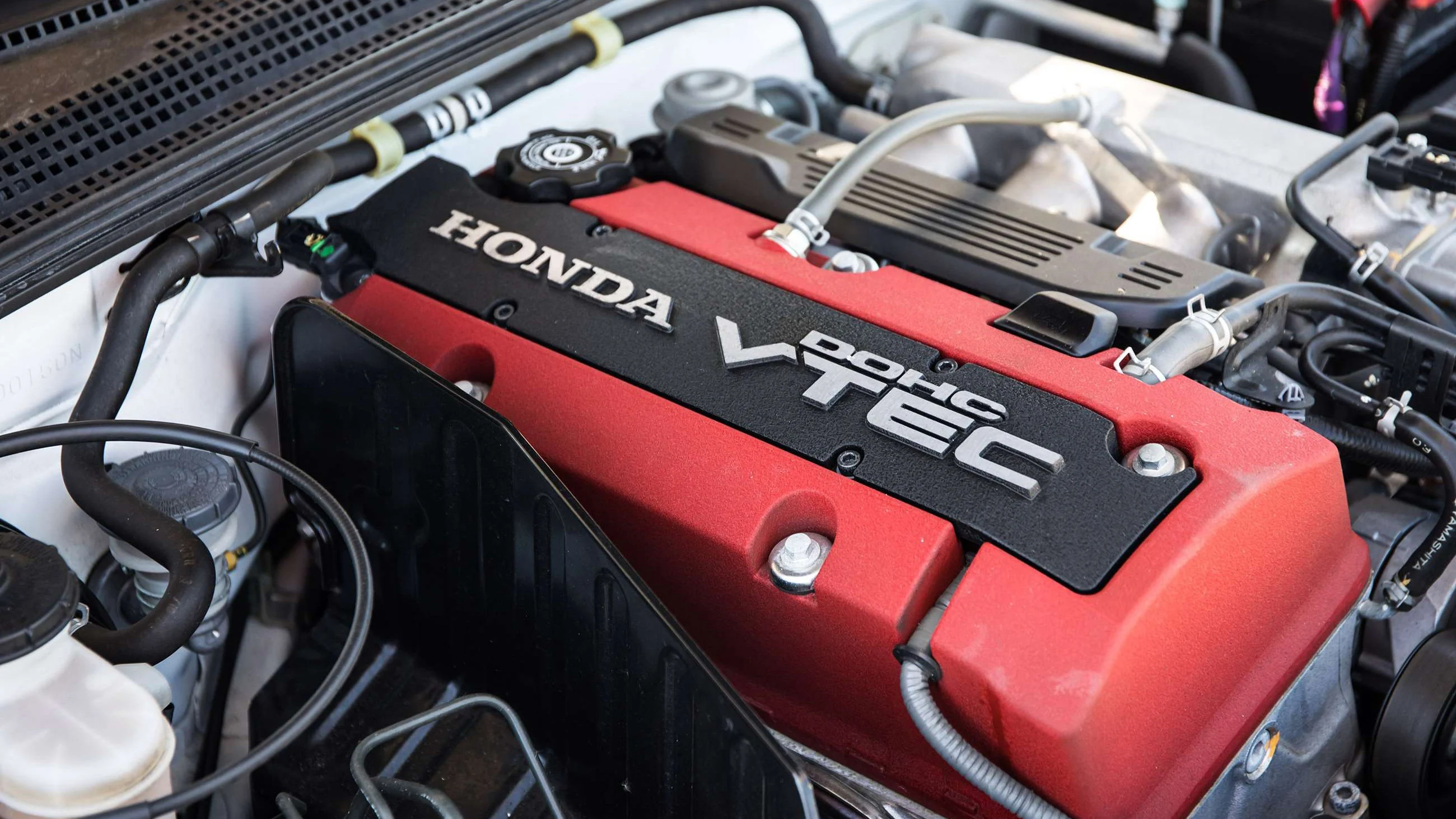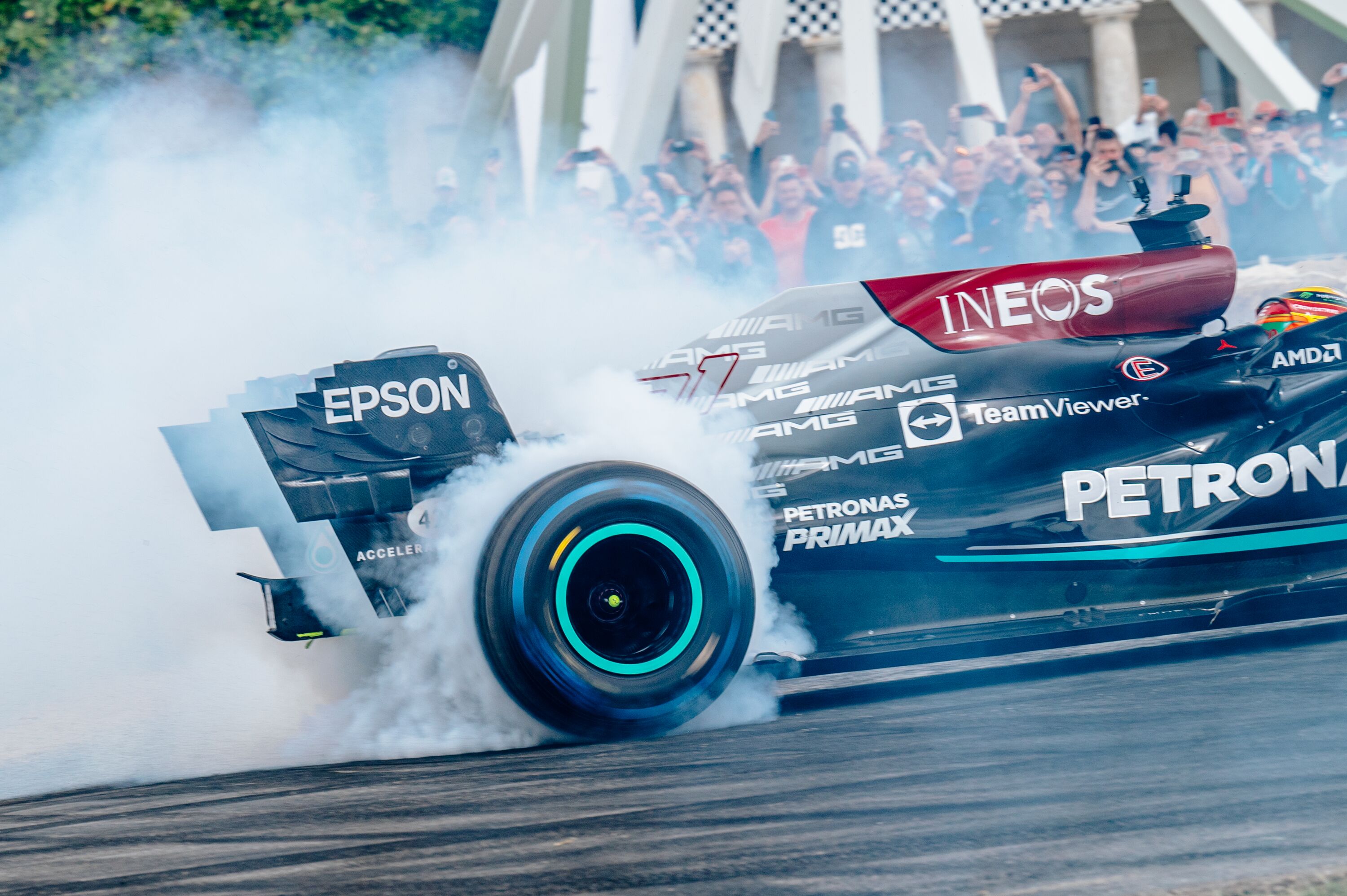The 10 best four-cylinder engines ever made
It's easy to overlook the humble four-cylinder engine. Most often fitted to shopping cart hatchbacks, many of us learnt to drive using four-cylinders – which could be why they’re dropped like hot potatoes as we strive to up the cylinder count for ever-more powerful machines (not to mention the excitement that comes with owning your first V6, V8, V12, V10… etc.). But dabbling in big motors only allows you to appreciate the advantage of four-cylinder engines.
Their light weight makes them ideal for proper sportscars, and with less mechanical inertia they are incredibly responsive. A good four-cylinder sounds epic, too, with an engine note that rises from a bottom-of-the-lung gurgle to top-of-the-lung shriek as the revs rise. Fewer cylinders mean cheaper servicing costs, and if you want to do your own spannering, a longitudinally mounted 'four' is one of the easiest ways to do it. Here, you'll find some of the best four-cylinders ever made.

Rover K-Series (1988)
The Rover K-Series has often been the whipping boy of the engine-making world, much maligned for its fragility and the disinterest its maker had in curing its problems. However, engineers in the know – the type that works for Lotus and a series of other lightweight sports car specialists – see the K-Series as a triumph of engineering, albeit one with known issues you can fix.
The K-Series was a revolution when it was developed in the 1980s, sporting twin cams and 16-valve heads. But the devil was in the detail, more specifically, the engine's weight. At just 96.5kg, it was more than 50 per cent lighter than a Honda S2000's motor, an engine followed decades later. Problems did occur, however. Head gasket failure is one of the biggest. But most issues – like the use of plastic coolant manifolds and poorly positioned thermostats – have long since been resolved by now.

Mazda B6ZE (RS) (1989)
When Mazda made the original MX-5, it set out to build a reliable British sports car with a folding fabric roof that was easy to operate and didn't leak. At its heart would be precisely the engine you'd expect to find under the bonnet of such a machine – a 16V twin-cam that would gleefully scream its heart out, providing you with (not a massive amount of) forward motion.
The engine was a perfect fit for the MX-5. Not only did it provide most of its power at the top end, allowing you to make plenty of use of the MX-5's wonderful gearshift, but it also sounded great doing so (especially with some sympathetic mods) and even looked good with its bare-metal engine cover. Turbocharged in the 323 GTX, the B6ZE(RS) iron block and oil jet cooling meant it was under stress in the MX-5. Still, as it was designed to be turbocharged, it was also relatively easy to add forced induction further down the line as a multitude of amateur YouTube videos will testify.

BMC A Series (1951)
The BMC A Series was never the most powerful four-cylinder engine in the world, nor was it particularly revolutionary, but it remains one of the most popular engines of all time. Launched in 1951 under the bonnet of the Austin A30, every single version of the engine made had a cast-iron block and cylinder head, and goodness, were there plenty of versions… The smallest capacity BMC A Series engine was 803cc, the largest 1,275cc. The least powerful had 15PS (11kW), a diesel no less, while the most powerful was the 1,275cc unit with a small turbocharger bolted on.
You’d think a good run for an engine would be 20 years, perhaps? Well, the A Series lasted nearly 50, production ending with the last of the ‘original’ Minis in April 2000. Because of the engine’s popularity, if you own an A Series powered machine today and need a spare part you almost certainly won’t have trouble finding one, used or new, as plenty of businesses now manufacturer spares to cater for the huge market.

Alfa Twin Cam (1954)
Another engine that lasted for decades is the Alfa Romeo Twin Cam. Introduced in 1954 in the Alfa Romeo Giulietta, the work of Italian designers Orazio Satta Puliga and Giuseppe Busso (yes, that Busso) it was an advanced little unit, certainly more impressive than its predecessor, the 1900. Instead of an iron block it used aluminium alloy, an unprecedented idea in 1954, with cast iron wet cylinder liners, and it featured an aluminium alloy head, a steel crankshaft, double overhead camshafts and more.
It was a modest creation at first, measuring 1,290cc in the Giulietta, and there were two other versions with even less capacity. But for the most part the Twin Cam went up in capacity and performance, powering the Spider, Giulia, Junior, Alfetta, 75, 164, 155, 164 and more, with tweaks along the way and countless updates (including Twin Spark and turbocharging), the result of which was a production run that lasted until 1994. The engine was also breathed on by Autodelta, the performance division of Alfa Romeo, winding up the power, torque and rev limit for various racing adventures.

S14 – E30 BMW M3 (1986)
The four-cylinder S14 engine is iconic, and simply couldn’t be missed off from this list. While it might seem odd to have a four-pot M3 now, having been through various six-cylinders and a V8 in subsequent models, the S14 was a perfectly appropriate engine at the time when you consider the E30 M3 weighed only 1,200kg. The S14 was sold in various guises in the M3, from S14B23, 2.3-litre, 200PS (147kW) form in the first E30 M3 through to the S14B23 EVO2 with 220PS (162kW) and the 2.5-litre, 238PS (175kW) S12B23 EVO3.
Beyond the road-going M3s, though, the S14 proved to be a racing monster, residing in M3s that won the 24 Hours of Nürburgring five times, the 24 Hours of Spa four times, and powering multiple race and championship winners across the BTCC, DTM and the world of rallying. Few engines can sound quite so angry as the S14.

B16B – Honda Civic Type R EK9 (1997)
How could there not be a VTEC motor on here? The EK9 Honda Civic Type R was the very first Civic Type R, following on from the Japanese market NSX Type R in 1992 and Integra Type R in 1995, and USA market Acura Integra Type R in 1997 in what has grown into a long line of ‘Type Racing’ products. The EK9 was sold in Japan only, based on the sixth-generation Civic SiR, but it had a helical limited-slip differential, a close-ratio five-speed manual gearbox, a seam-welded chassis and plenty more besides.
The icing on the top was the 1.6-litre B16B engine, a hand ported, naturally aspirated four-cylinder with 182PS (134kW) and 160Nm (118lb ft). The reason it makes our list above the more powerful 2.0-litre in the EP3 that was built and sold in the UK is its character. Not only did it rev seemingly to the stratosphere (9,000rpm), but the cam profiling was incredibly aggressive. The result was a relatively docile motor below 6,100rpm, but then, when VTEC kicked in, the engine went into full lunatic mode.

F20C – Honda S2000 (2000)
Sorry, what’s this? Another Honda engine? Yeah, sorry about that – it was unavoidable really, because the F20C is a serious unit. A 2.0-litre, double overhead camshaft VTEC motor, it produced 240PS (177kW), or more in the Japanese market, and revved to 9,000rpm, with 0-62mph taking just 6.2 seconds, peak power at 8,300rpm and VTEC getting going at 5,850rpm.
Honda credited its F1 programme for some of the developments, like forged aluminium pistons, lightweight valve springs, an 11:1 compression ratio and a road car world-first use of metal injection moulded rocker arms. At the time of its launch, and for some time afterwards, the F20C meant the S2000 had the most power per litre of any naturally aspirated car on the market, with a whopping 120PS (88kW) per litre, breaking records set by – shock – Honda. We will never see a small, affordable sportscar with an engine quite so bonkers again.

EA888 – Volkswagen (2006)
OK, we’ll admit, the EA888 engine is not the most charismatic of four-cylinder engines, but how could we possibly ignore it? Built to replace the EA113, the EA888 has come in 1.8- and 2.0-litre forms, powering cars like the Mk2 Audi TT, the Skoda Yeti, the Mk2 Seat Leon, the Mk6, 7 and 8 Golf GTI, the Audi S3 and more… Versatility is its strong point, which when you’re a company like Volkswagen, with multiple brands and dozens of models to power, is incredibly important.
What’s more, the EA888 has proved robust and reliable when it’s come to tuning, too, with tuners able to squeeze out moderate performance gains with very little trouble and no modifications at all, while others have been able to crack more than 500PS (368kW) from the 2.0-litre EA888. Admittedly that is not with a standard turbocharger, and many bits besides, but if an engine doesn’t just detonate with that sort of power running through it then it can only be held in high regard.

B4204T48 – Polestar 1 (2018)
How engineers are able to know what’s going on when powertrains are as complicated as this is beyond us. This is the electrified B4204T48, one of the many four-cylinder hybrid engines from Volvo, which you can find in the Volvo S60, V60 and XC60, and the Polestar 1. In the Polestar 1, however, as well as being electrified, it is both supercharged and turbocharged.
The 2.0-litre four-cylinder engine uses the supercharger to give the system a boost from idle to 3,500rpm, and from there the turbocharger is in full swing, combining with two electric motors on the rear axle, a crank-integrated starter generator motor and a 34kWh battery (that can push you along for 77 miles on its own, by the way) for a total of 609PS (448kW) and 1,000Nm (740lb ft) of torque. To get an engine to work in a system as intricate as that is a true marvel of mechanical engineering.

M139 – Mercedes-AMG A45S (2019)
We’ve talked about many engines in this list, but what about the most powerful? The most powerful four-cylinder engine title (at the time of writing) goes to the M139 found in the Mercedes-AMG A45S. Previewed in June 2019 and seen a month later at the 2019 Festival of Speed presented by Mastercard, the A45S’s 2.0-litre M139 has 421PS (310kW) and 500Nm (372lb ft) of torque courtesy of twin-scroll, twin-turbos, running through a seven-speed double-clutch to all four wheels.
This, then, is a hatchback that’ll hit 62mph in 3.9 seconds and go on to a top speed of 168mph. The engine even has ‘Nanoslide’ piston linings, where a thin, low-friction coating is applied to the inside of the cylinders, a technology that Mercedes says can save several kilos per engine and reduce friction by up to 50 per cent. Each of these engines is also built by just one person. In short, it’s an absolute beast of an engine.
road
news
List
Four-cylinder Engines
Mercedes
AMG
A45S
Honda
T350
Boxer
BMW
E30
M3
Civic
Type R
S2000
Volkswagen
Polestar
rover
k-series
mazda
RS
































































